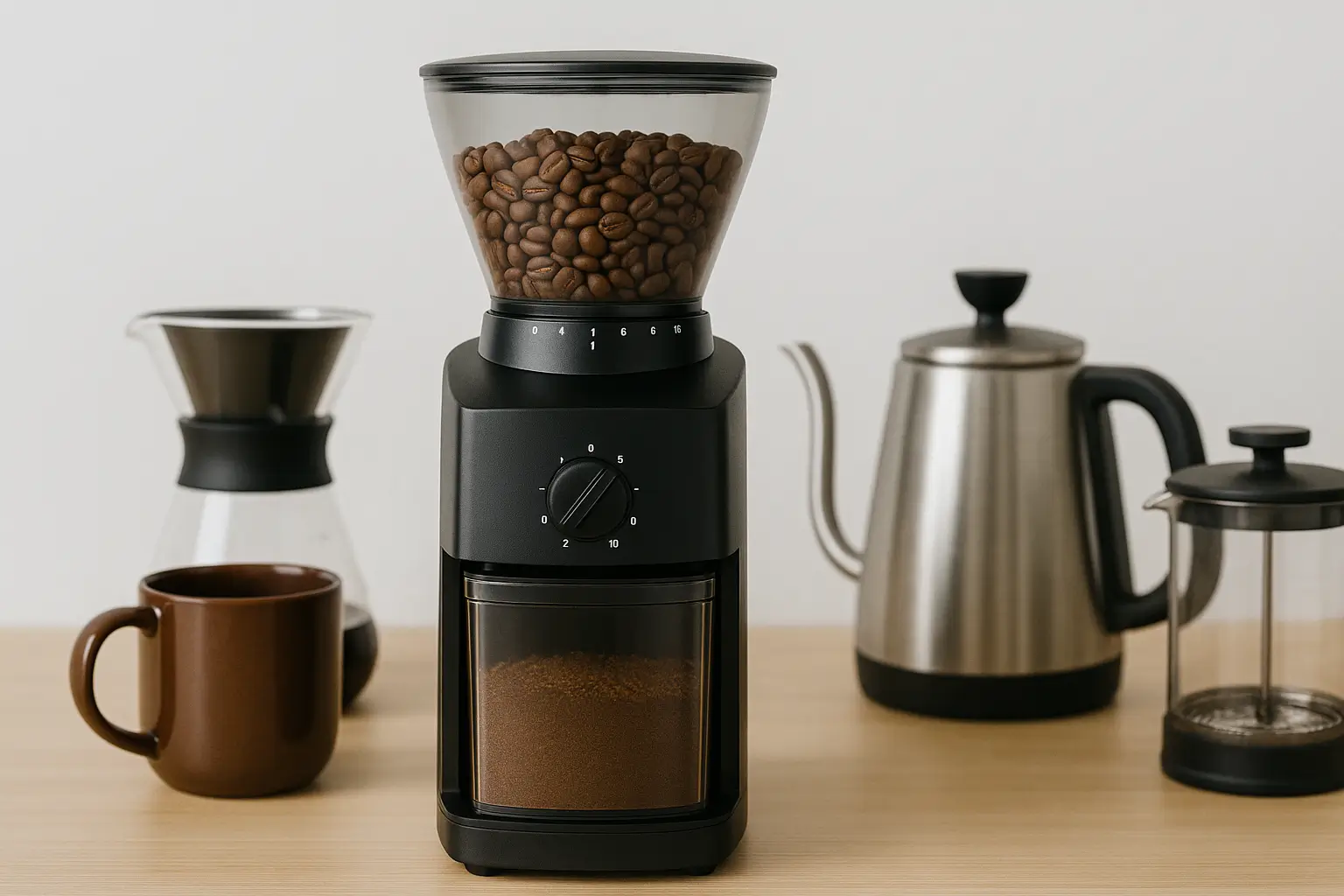One of the most overlooked but critical elements of a great cup of coffee is the grind. The grinder you choose can significantly impact the flavor, consistency, and overall quality of your brew. Whether you prefer French press, espresso, or pour-over, understanding which grinder suits your method is key to unlocking your coffee’s full potential. In this guide, we’ll explore the types of coffee grinders, their pros and cons, and how to pick the perfect one based on your brewing style.
Why Grind Size Matters
Grind size affects:
- Extraction rate: Finer grinds extract faster; coarser grinds take longer.
- Flavor clarity: A consistent grind produces a balanced cup.
- Brewing efficiency: The wrong grind can lead to over- or under-extraction.
Different brewing methods require different grind sizes. A grinder that delivers uniform particles ensures even extraction, which is essential for great flavor.
Types of Coffee Grinders
1. Blade Grinders
How it works: Uses spinning blades to chop beans.
Pros:
- Inexpensive
- Easy to find
- Compact and simple to use
Cons:
- Inconsistent grind size
- Generates heat, affecting flavor
- Not ideal for precision brewing
Best for: Basic drip coffee or cold brew (if you’re just starting out)
2. Burr Grinders
How it works: Grinds beans between two abrasive surfaces (burrs).
Types:
- Flat Burr: Consistent grind, often used in professional settings.
- Conical Burr: Slightly less consistent but quieter and cooler.
Pros:
- Consistent grind size
- Adjustable settings for different methods
- Better flavor control
Cons:
- More expensive than blade grinders
- Takes up more space
Best for: All brewing methods, especially espresso, pour-over, AeroPress
3. Manual Grinders
How it works: Hand-powered burr grinder.
Pros:
- Portable and compact
- Quiet
- Great for travel or small kitchens
- Usually affordable
Cons:
- Requires effort and time
- May not grind fine enough for espresso
Best for: Pour-over, French press, travel brewing
Matching Grinder to Brewing Method
| Brewing Method | Ideal Grind Size | Recommended Grinder Type |
|---|---|---|
| Espresso | Fine | Burr (preferably flat) |
| Pour-Over (V60) | Medium-Fine | Burr (conical or flat) |
| French Press | Coarse | Burr or Manual |
| Cold Brew | Extra Coarse | Burr or Blade (with caution) |
| AeroPress | Medium-Fine | Burr or Manual |
| Drip Machine | Medium | Burr or Blade |
Features to Look For in a Grinder
- Grind Settings: Look for a grinder with multiple, easily adjustable settings.
- Durability: Metal burrs last longer than ceramic ones.
- Ease of Cleaning: Removable parts simplify maintenance.
- Capacity: Consider how much coffee you brew at a time.
- Noise Level: Important for early-morning use.
Price Guide
| Price Range | What You Get |
| <$50 | Basic blade or small manual grinders |
| $50–$150 | Entry-level burr grinders |
| $150–$300 | Quality burr grinders with more settings |
| $300+ | Prosumer-level grinders for espresso lovers |
Top Grinder Brands to Consider
- Baratza – Great for beginners and pros alike
- Hario – Affordable manual grinders
- Breville – User-friendly electric grinders
- Fellow – Sleek design with precision performance
- Rancilio – High-end espresso grinders
Tips for Better Grinding
- Grind just before brewing to preserve flavor.
- Use a scale to measure beans accurately.
- Clean your grinder regularly to avoid stale residue.
- Adjust grind settings based on taste and brewing results.
Final Sip
Choosing the right coffee grinder isn’t just about the price—it’s about compatibility with your brewing method and your flavor goals. Whether you go manual for the ritual or electric for convenience, investing in a quality grinder is one of the best ways to improve your coffee game.
So next time you brew, start with a fresh grind—and let your grinder do the magic.
